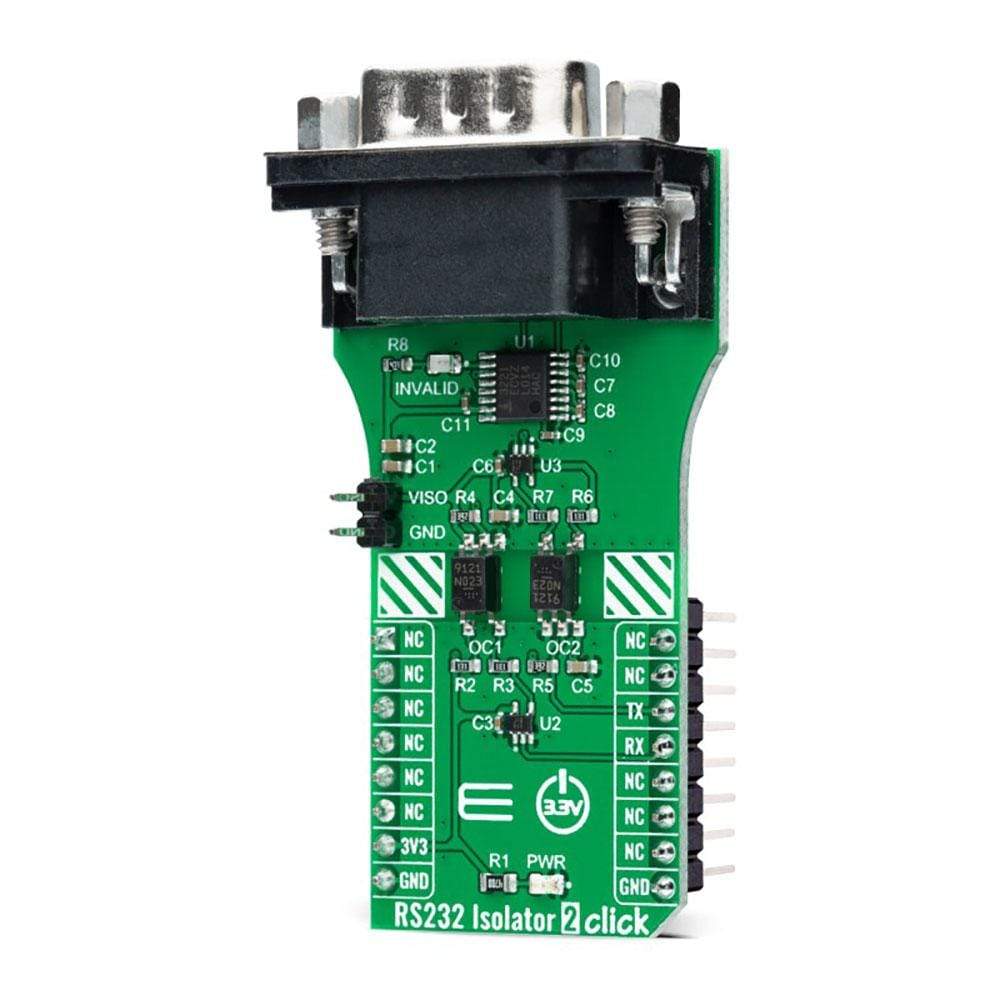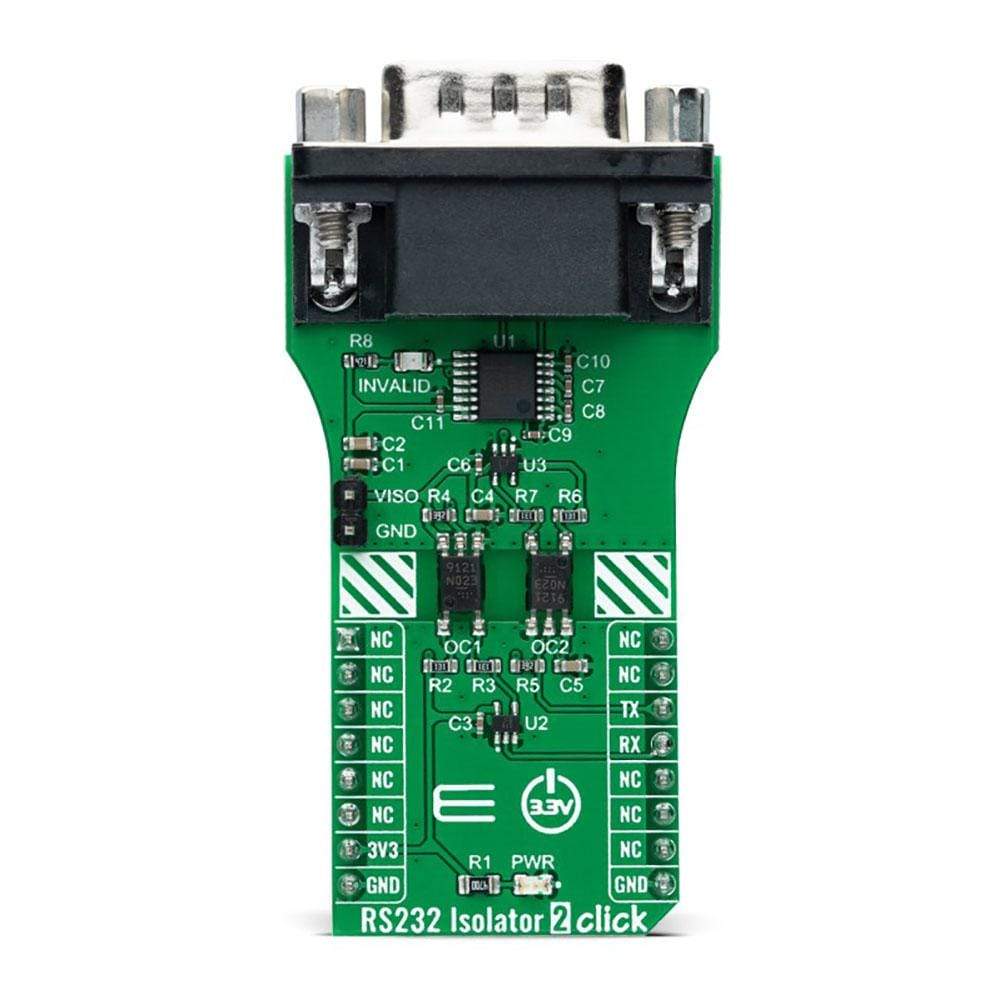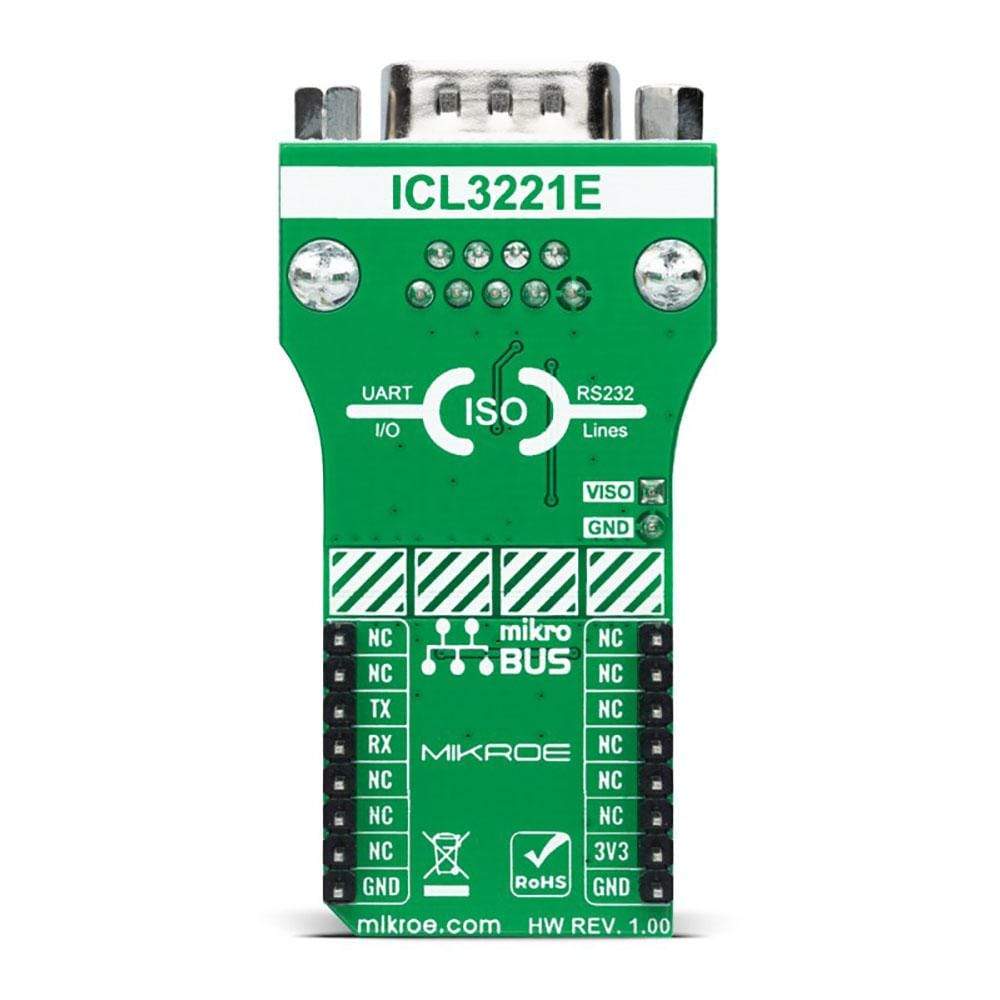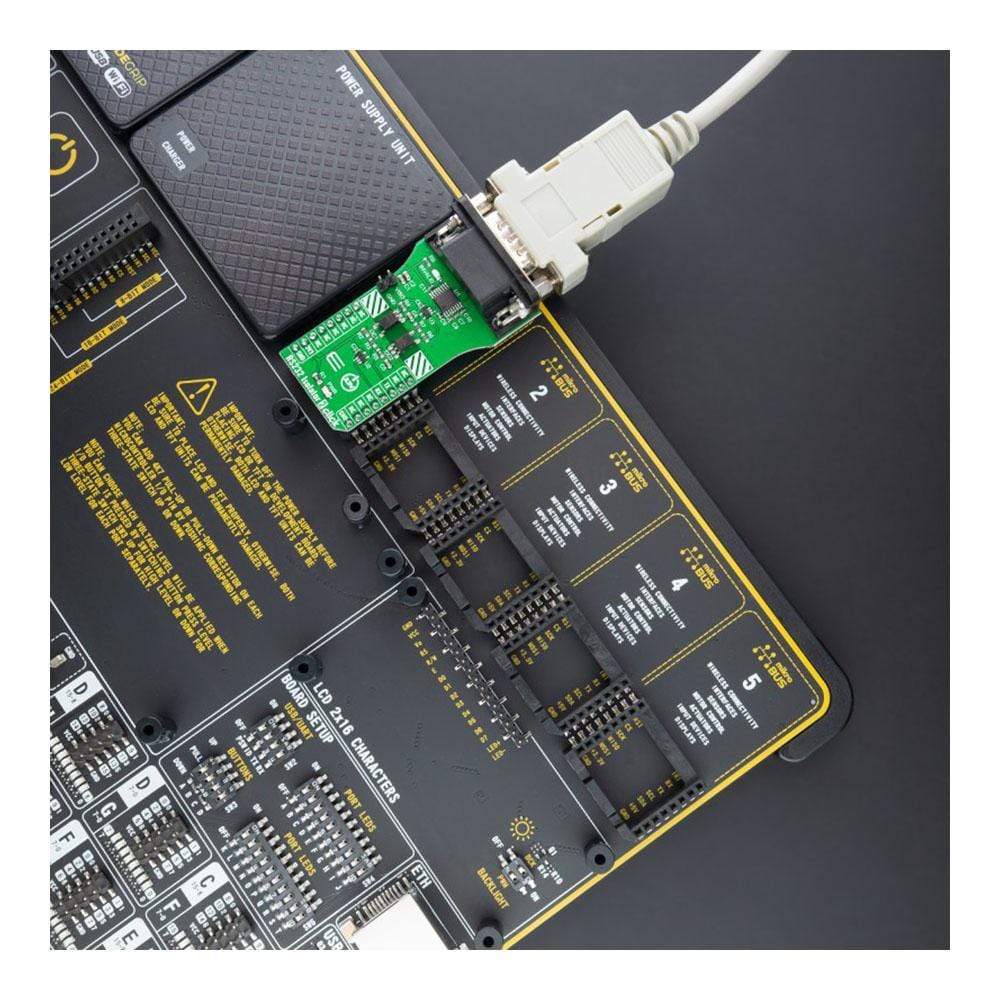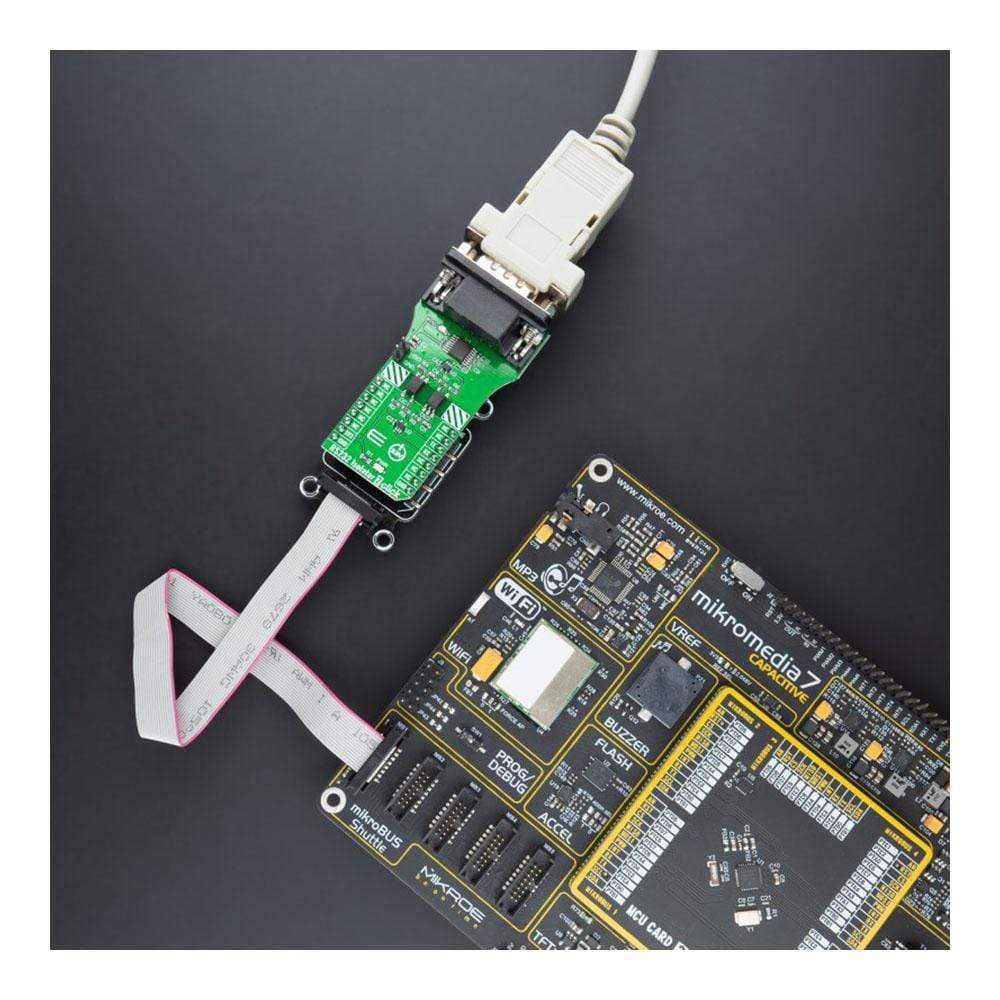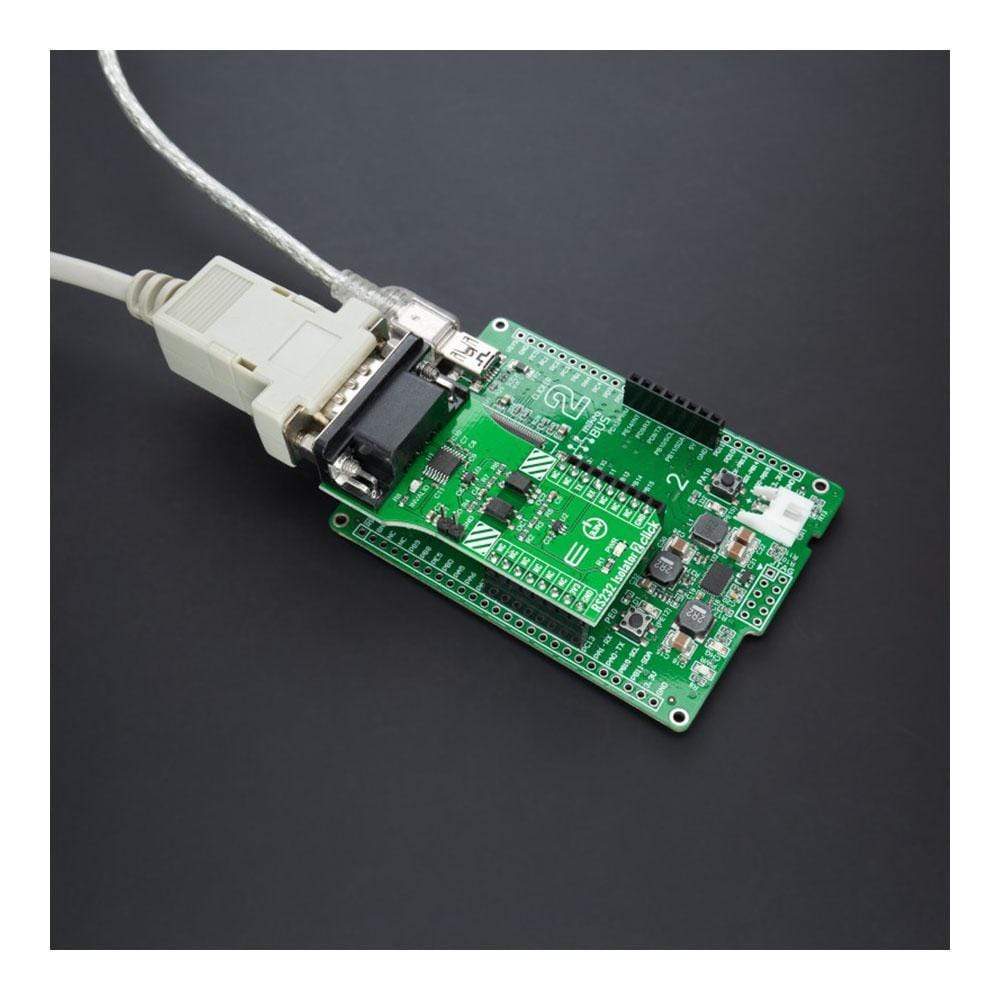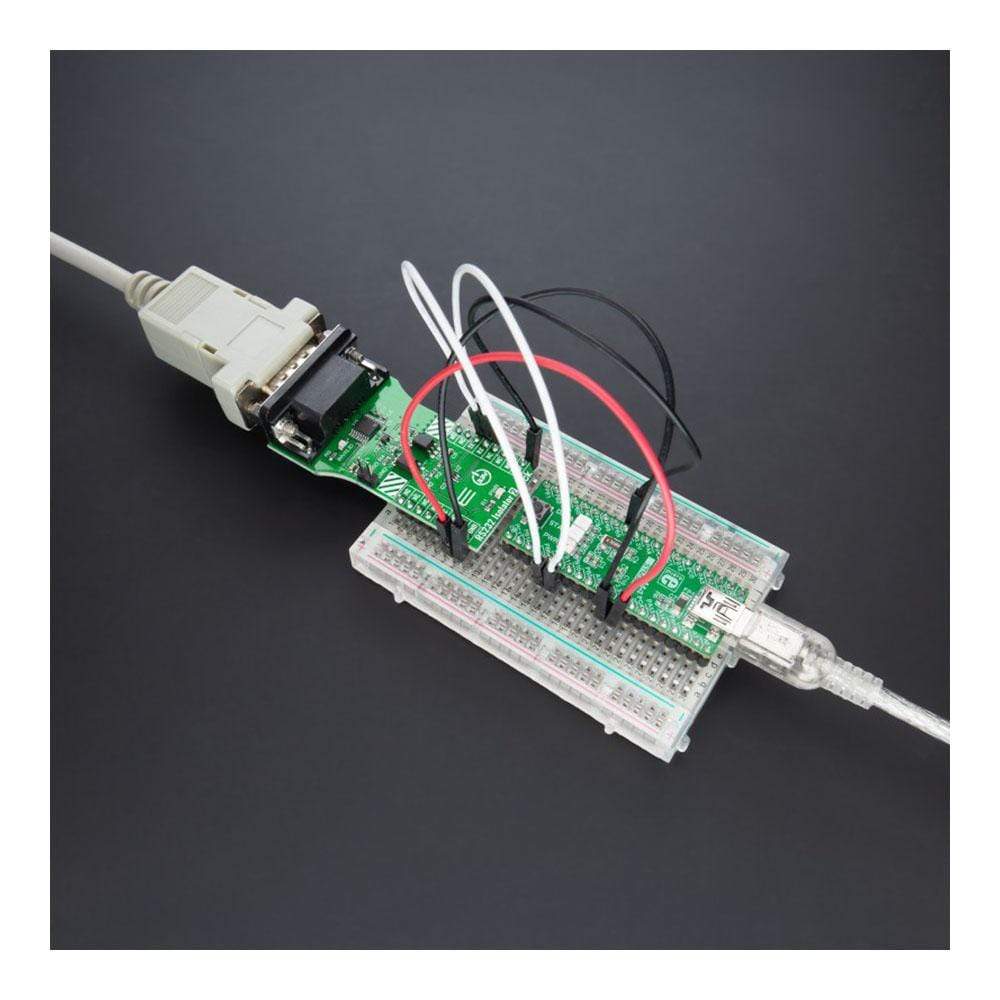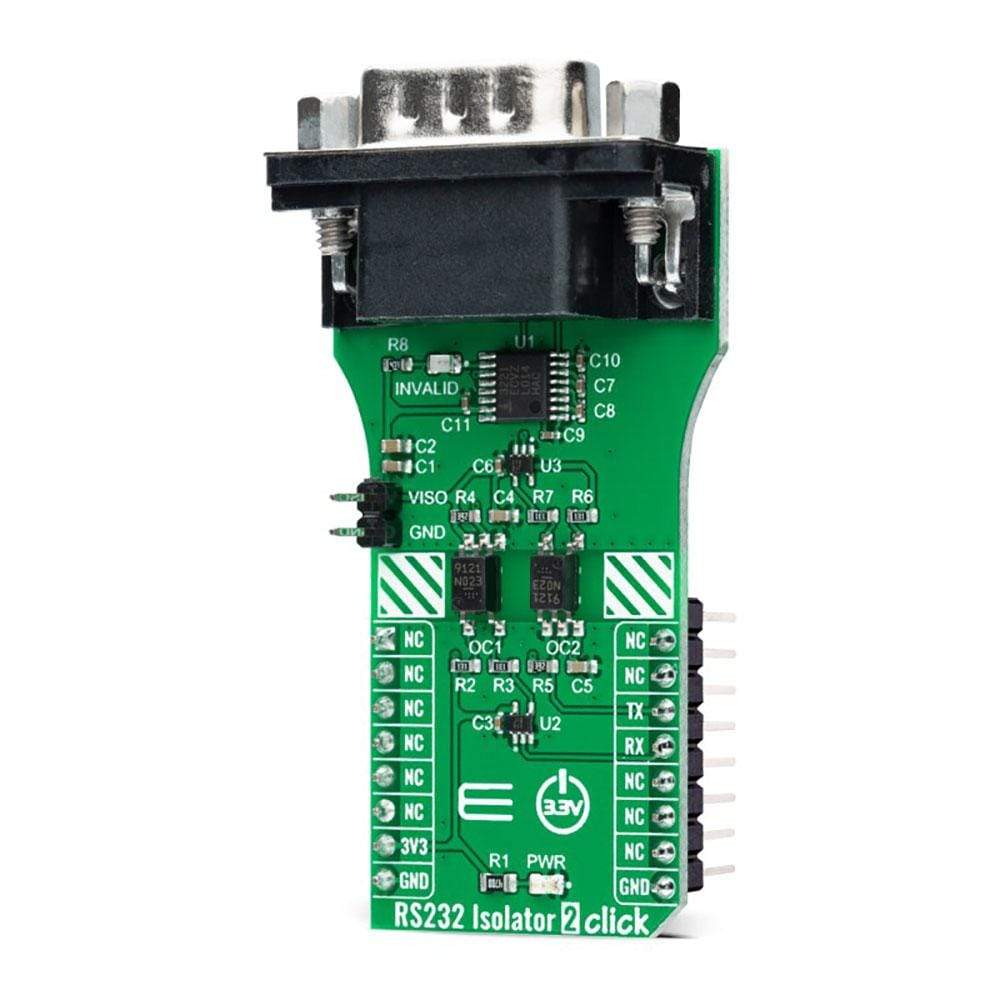
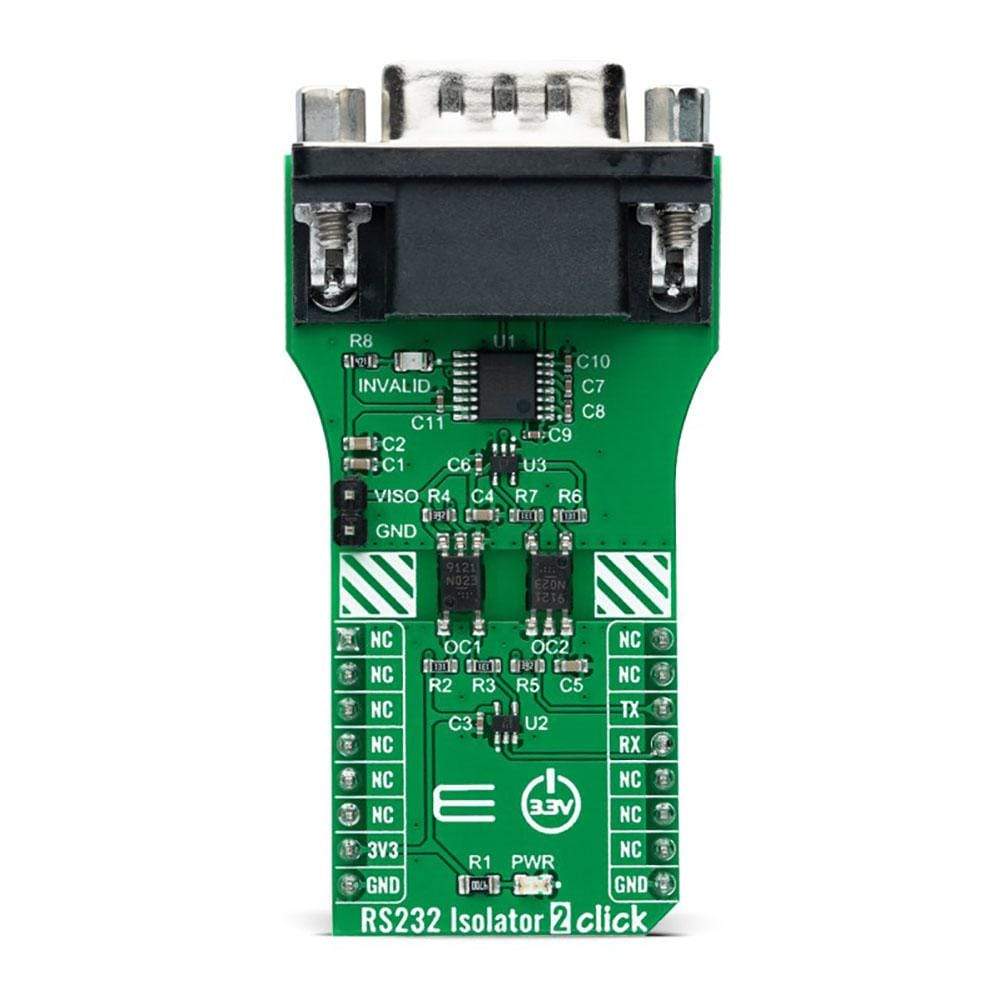
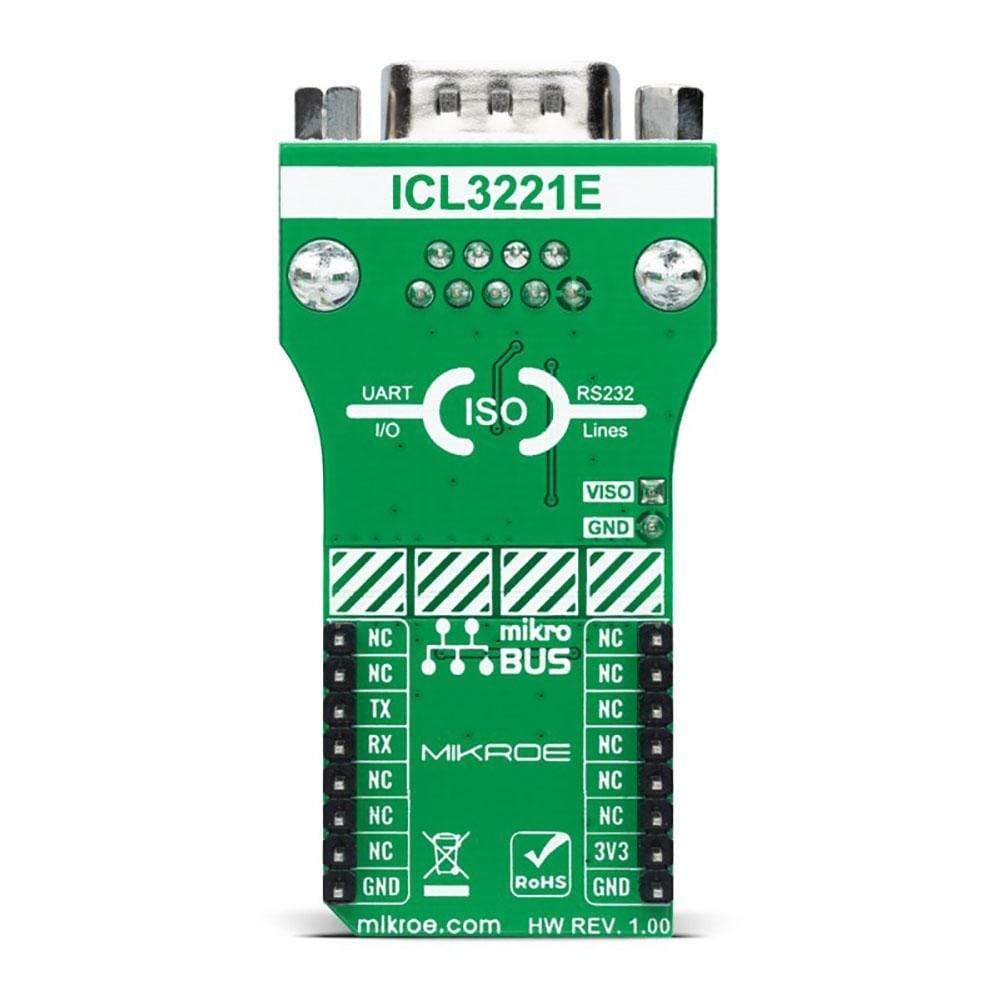
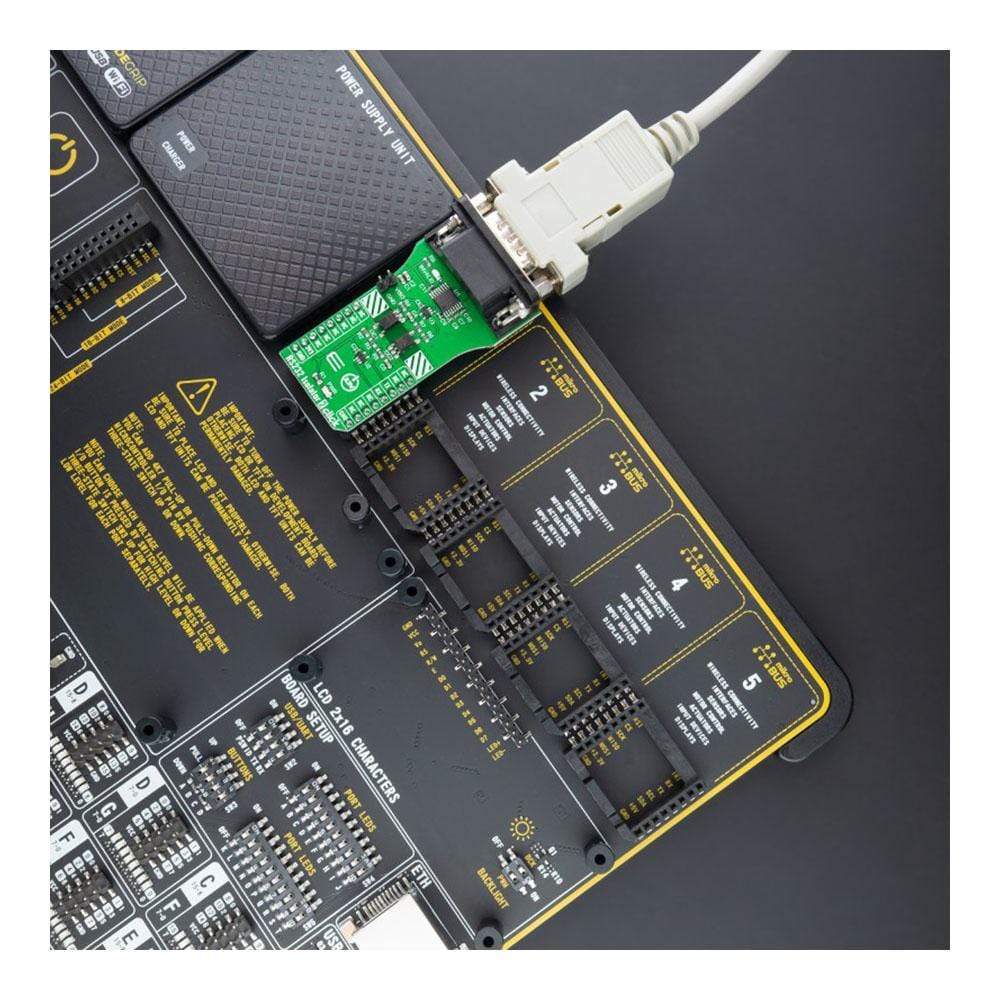
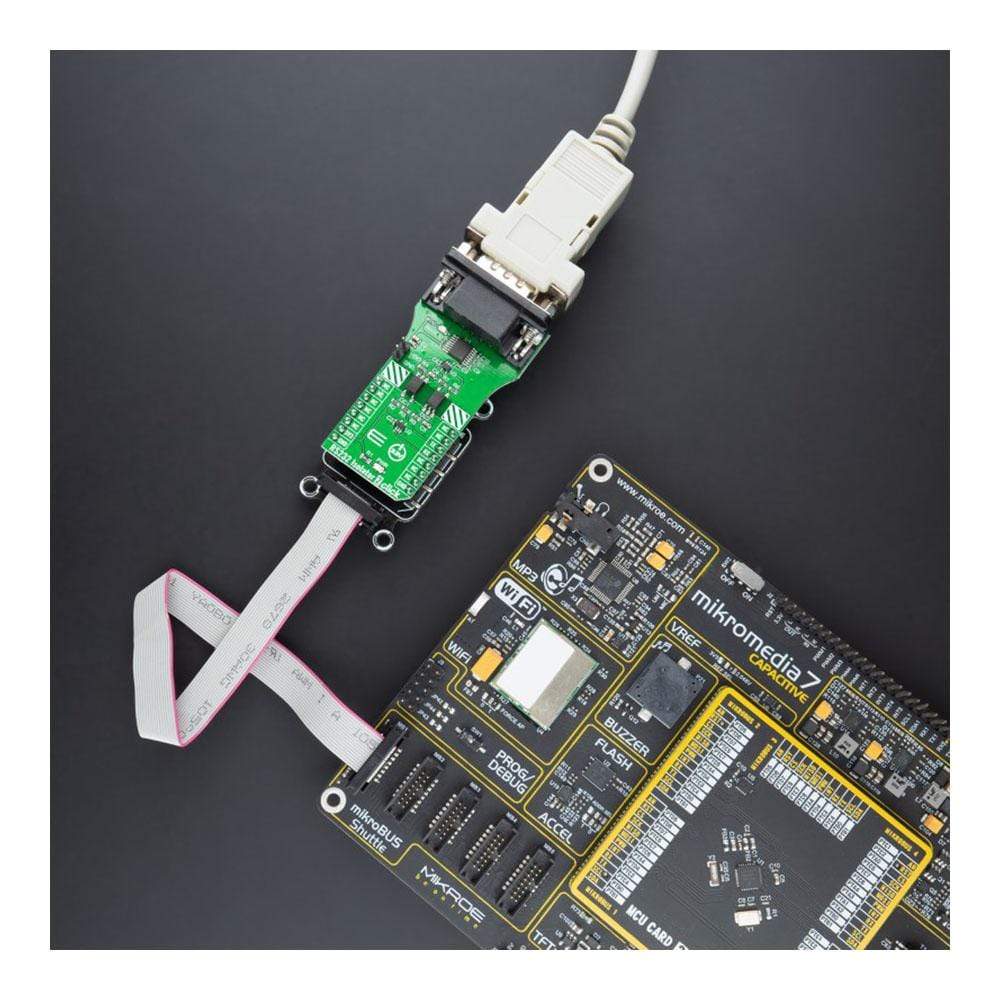
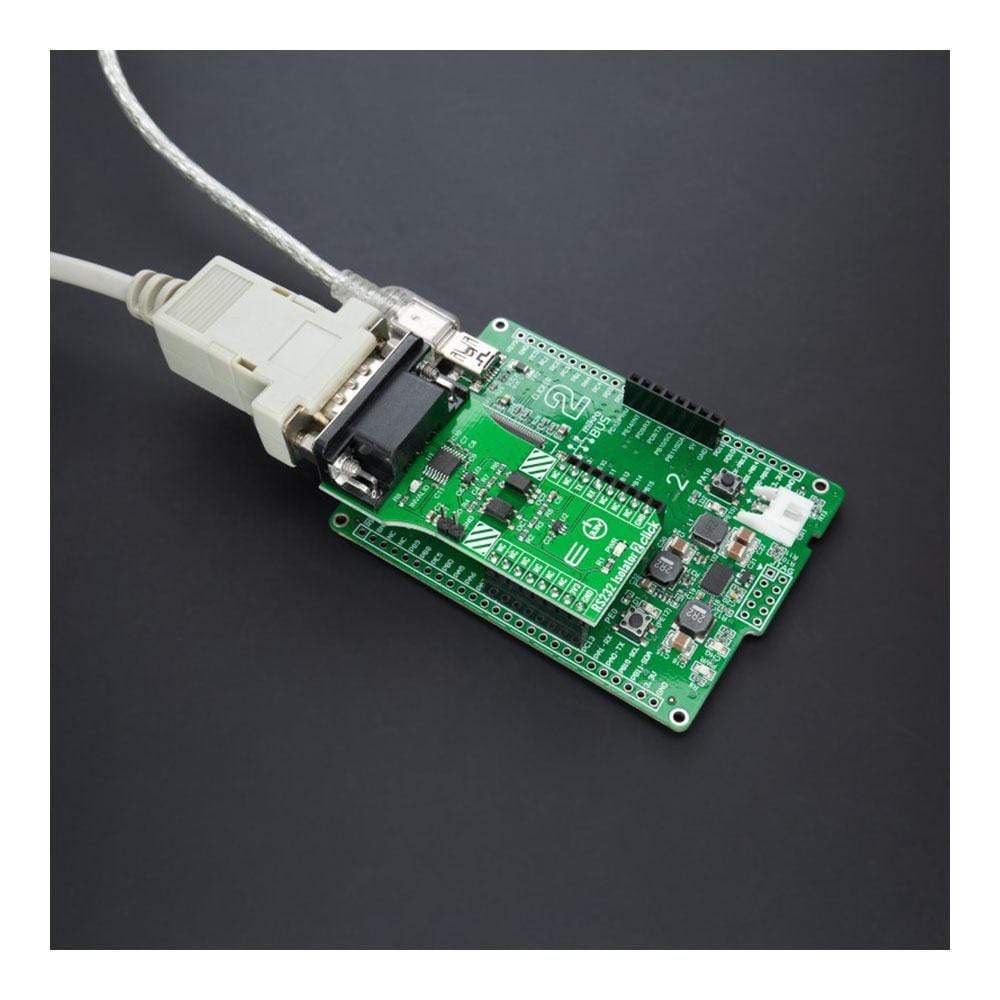
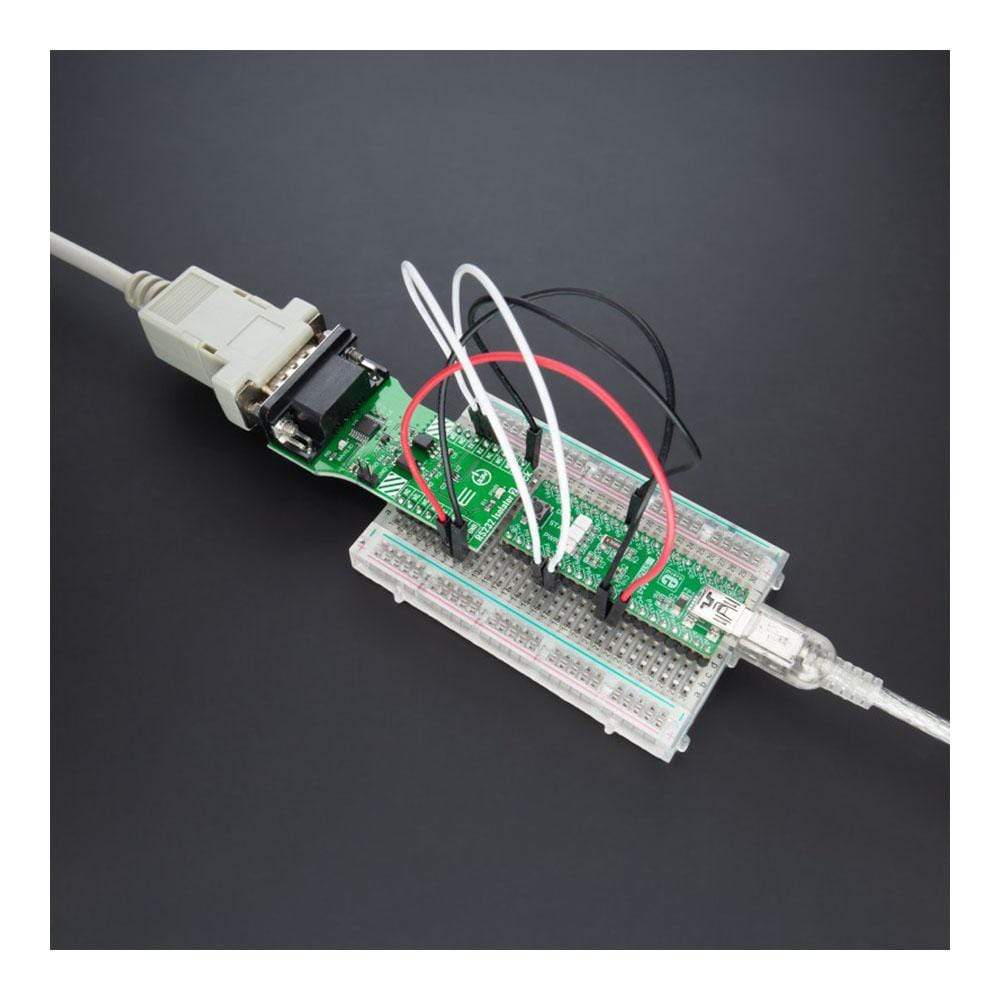
Overview
The RS232 Isolator 2 Click Board™ is a compact add-on board containing a fully isolated transceiver that provides secure and easy UART to RS-232 conversion. This board features the ICL3221, a 3.3V powered RS-232 transmitter/receiver that provides ±15kV ESD protection on its RS232 pins from Renesas. This Click Board™ is characterised by an assured minimum data rate of 250kbps. It features an automatic power-down function and uses high-speed digital optocouplers to isolate the RS-232 interface for 3.75kV isolation. It also possesses an LED indicator indicating a valid RS-232 signal at any receiver input. This Click Board™ is suitable for isolation of RS-232 signals portable equipment, where the low operational power consumption and even lower standby power consumption are critical.
The RS232 Isolator 2 Click Board™ is supported by a mikroSDK compliant library, which includes functions that simplify software development. This Click Board™ comes as a fully tested product, ready to be used on a system equipped with the mikroBUS™ socket.
Downloads
Le RS232 Isolator 2 Click Board™ est une carte complémentaire compacte contenant un émetteur-récepteur entièrement isolé qui fournit une conversion UART vers RS-232 sécurisée et facile. Cette carte est équipée de l'ICL3221, un émetteur/récepteur RS-232 alimenté en 3,3 V qui fournit une protection ESD de ±15 kV sur ses broches RS232 de Renesas. Cette Click Board™ est caractérisée par un débit de données minimum assuré de 250 kbps. Elle dispose d'une fonction de mise hors tension automatique et utilise des optocoupleurs numériques à grande vitesse pour isoler l'interface RS-232 pour une isolation de 3,75 kV. Elle possède également un indicateur LED indiquant un signal RS-232 valide à n'importe quelle entrée du récepteur. Cette Click Board™ convient à l'isolation des signaux RS-232 des équipements portables, où la faible consommation d'énergie de fonctionnement et une consommation d'énergie en veille encore plus faible sont essentielles.
La carte Click Board™ pour isolateur RS232 2 est pris en charge par une bibliothèque compatible mikroSDK, qui comprend des fonctions qui simplifient le développement logiciel. Cette Click Board™ est un produit entièrement testé, prêt à être utilisé sur un système équipé du socket mikroBUS™.
| General Information | |
|---|---|
Part Number (SKU) |
MIKROE-4536
|
Manufacturer |
|
| Other | |
Country of Origin |
|
HS Code Customs Tariff code
|
|
EAN |
8606027382093
|
Warranty |
|
Frequently Asked Questions
Have a Question?
Be the first to ask a question about this.

